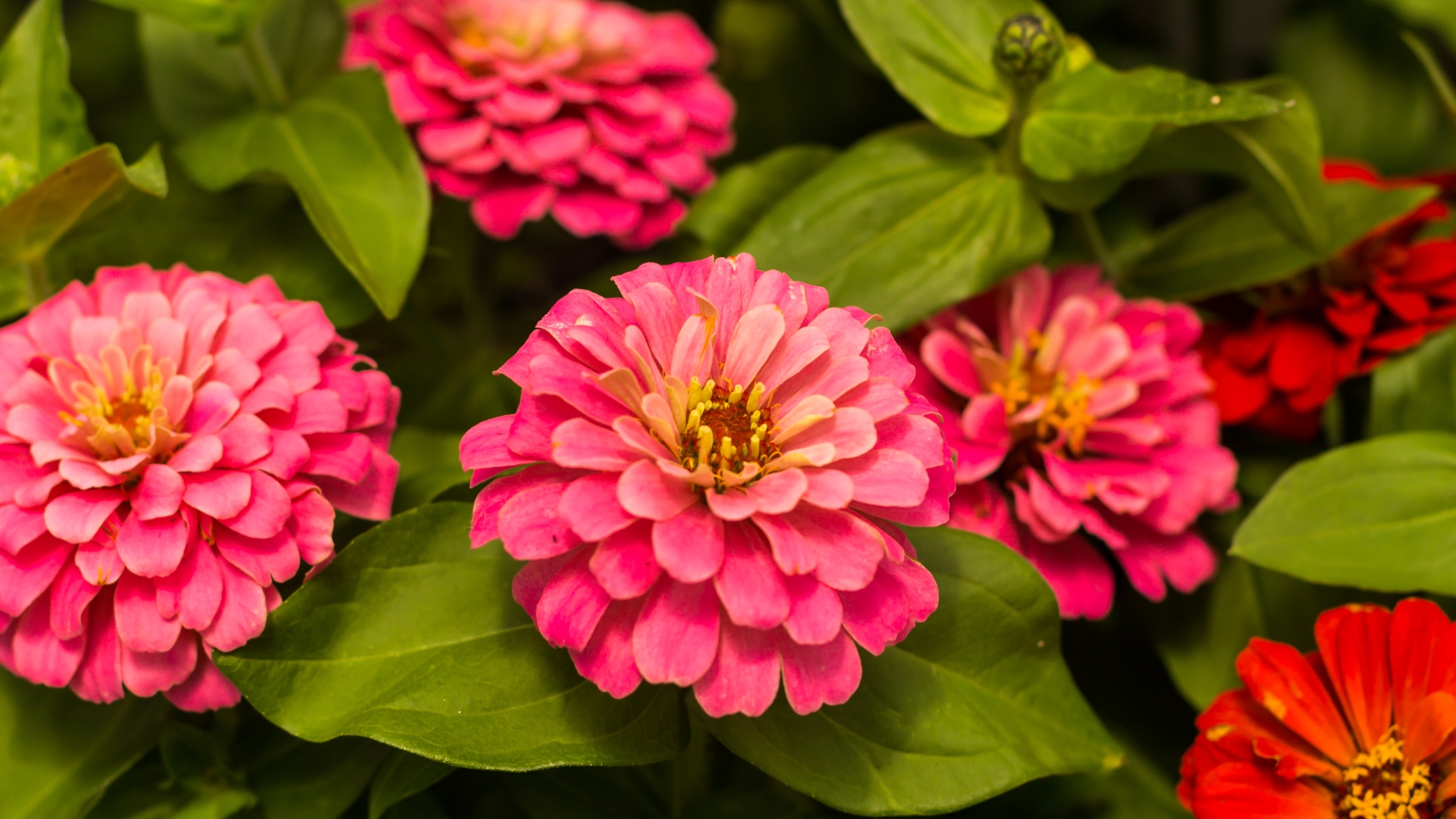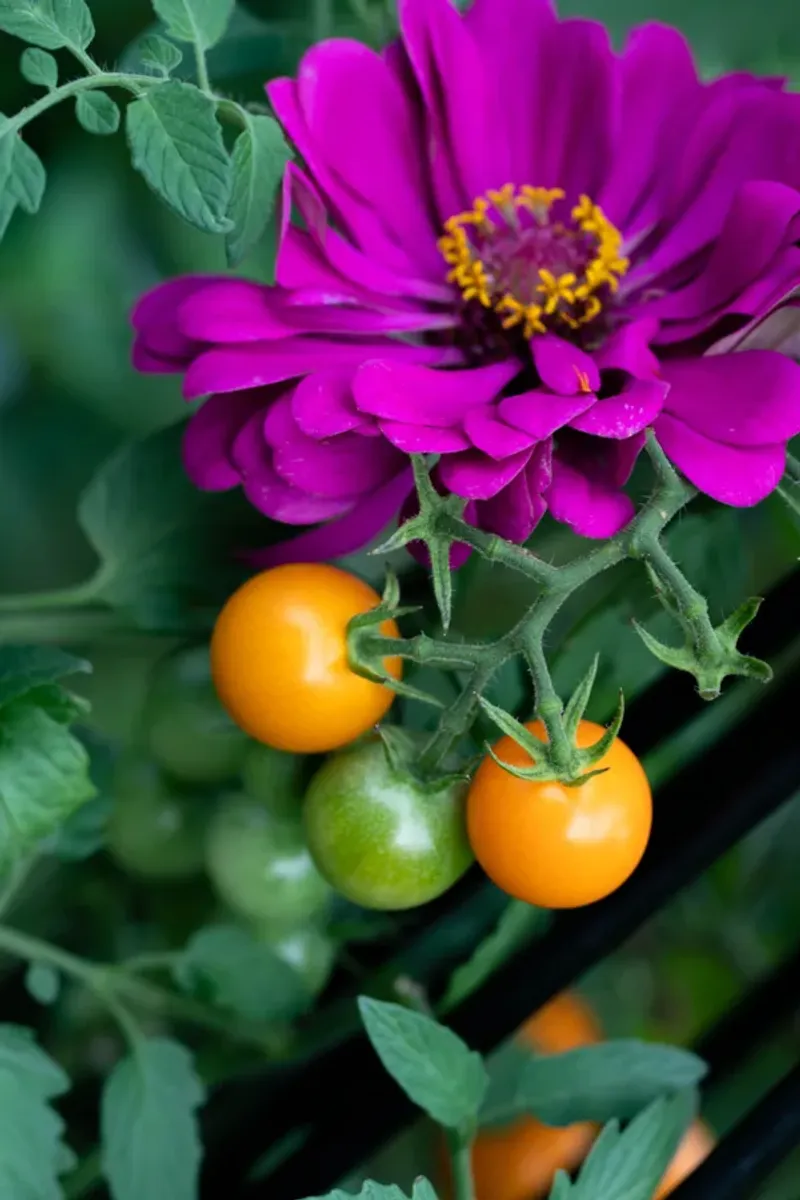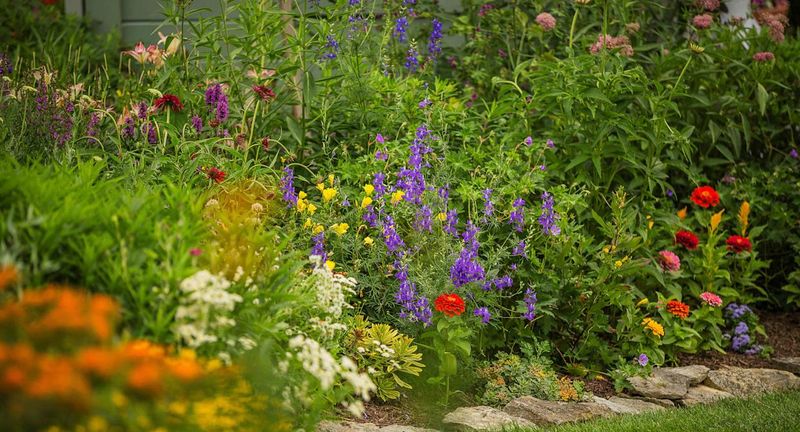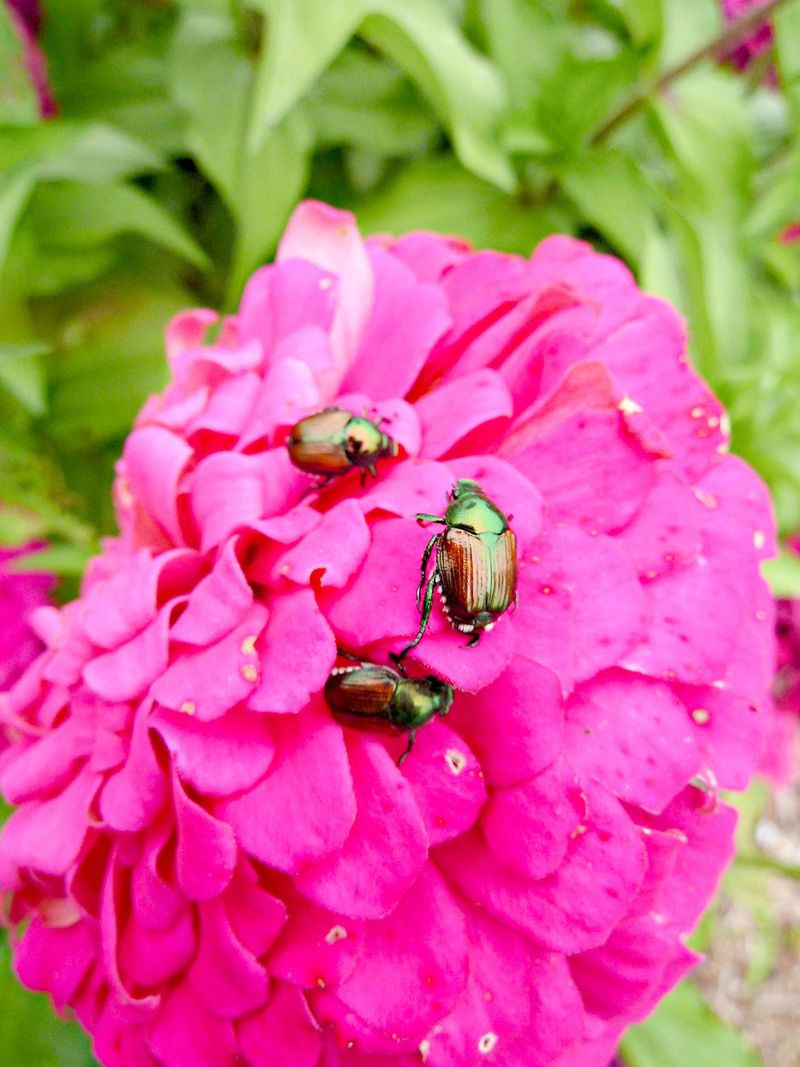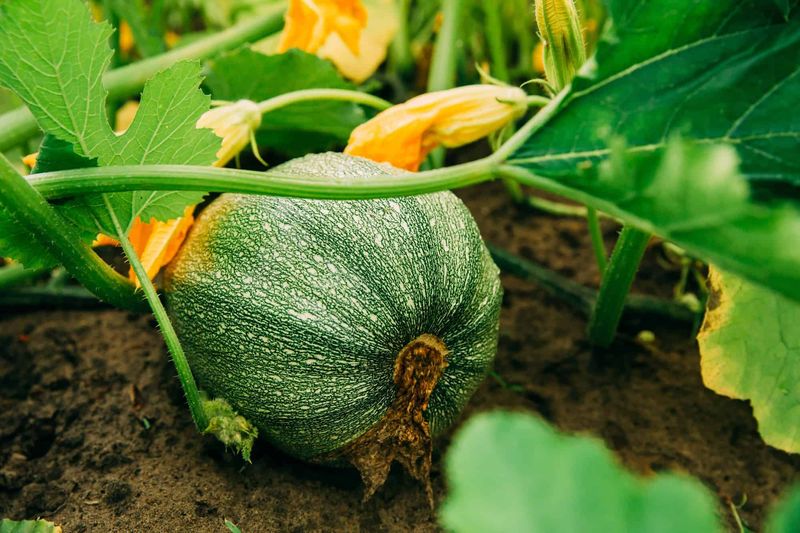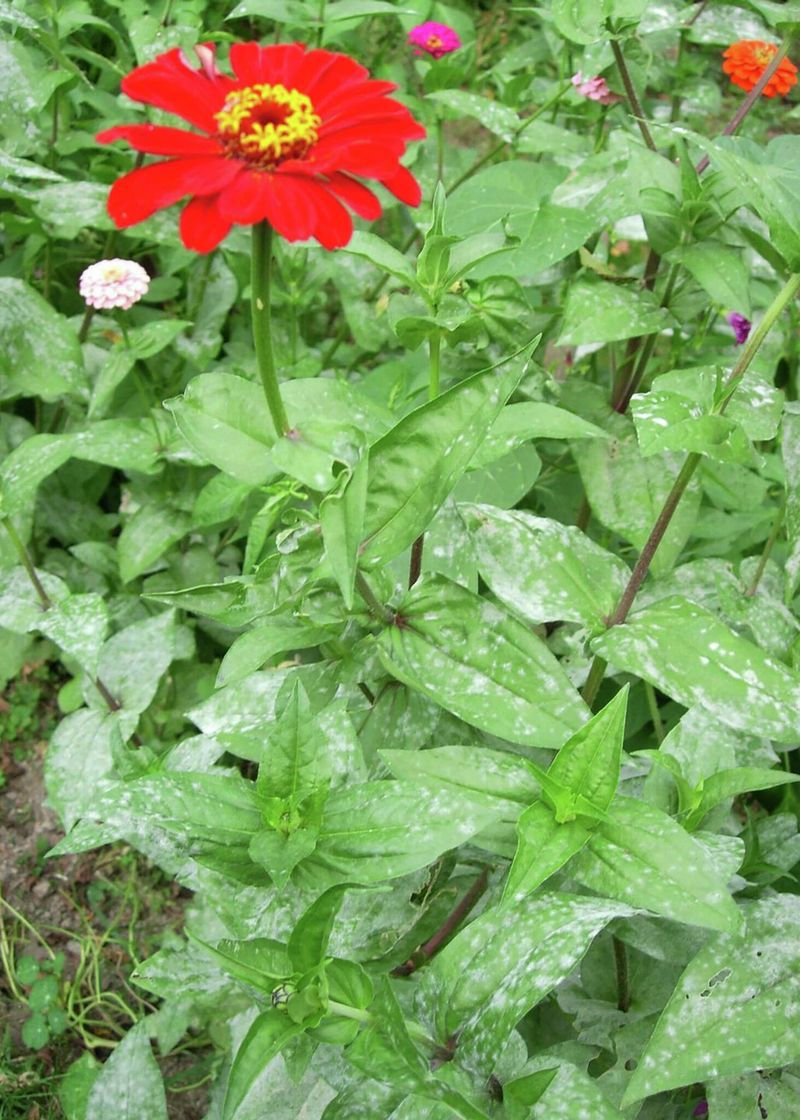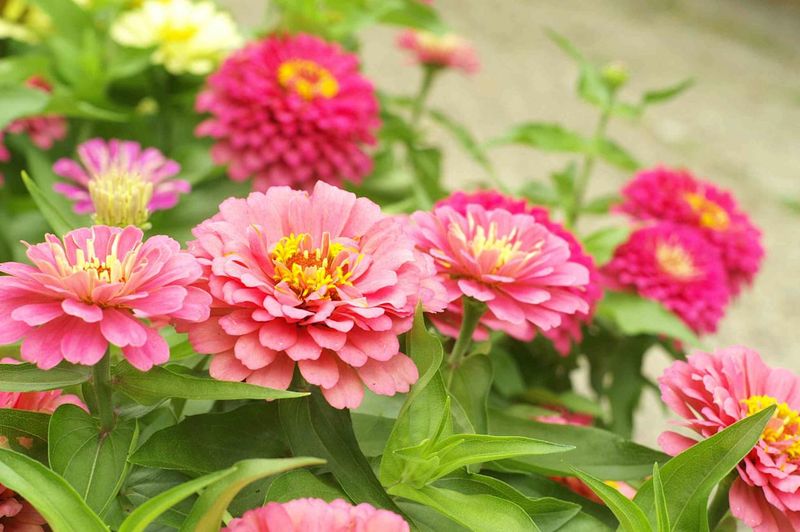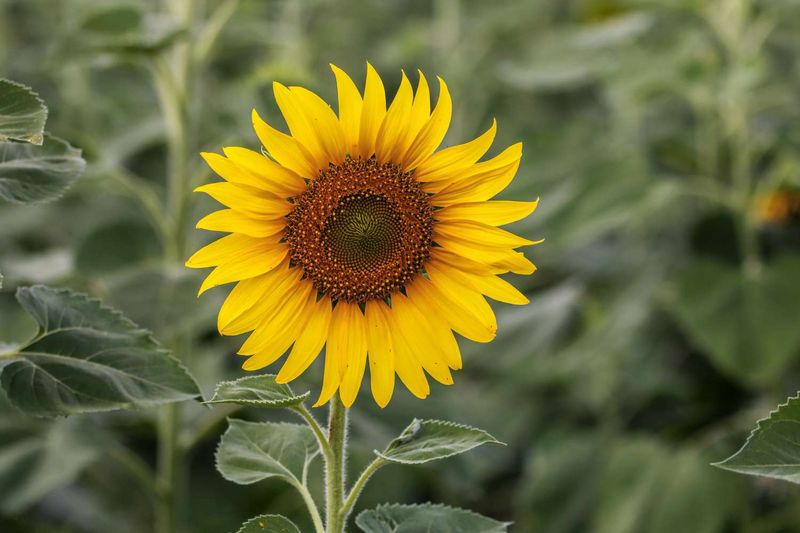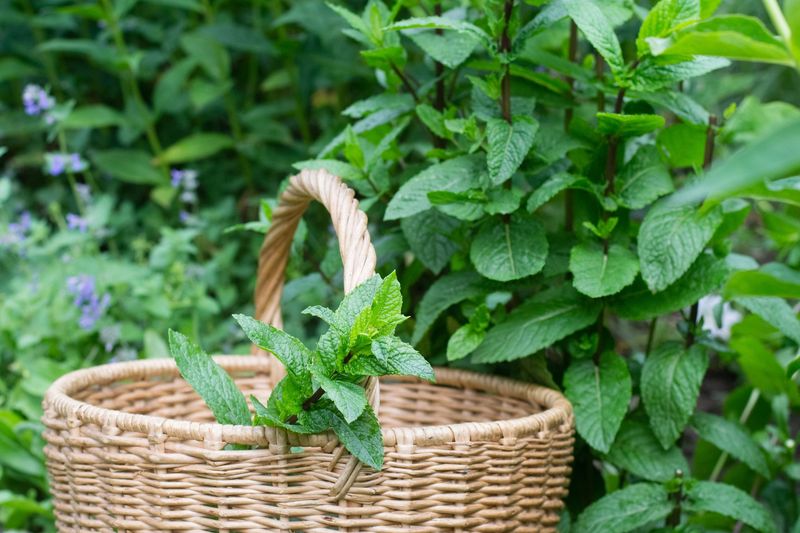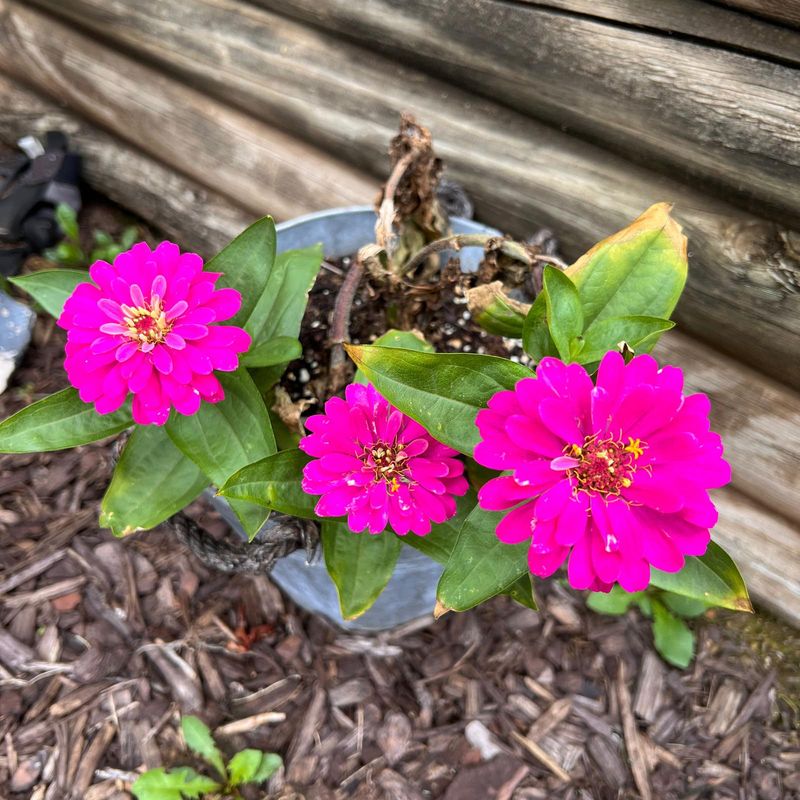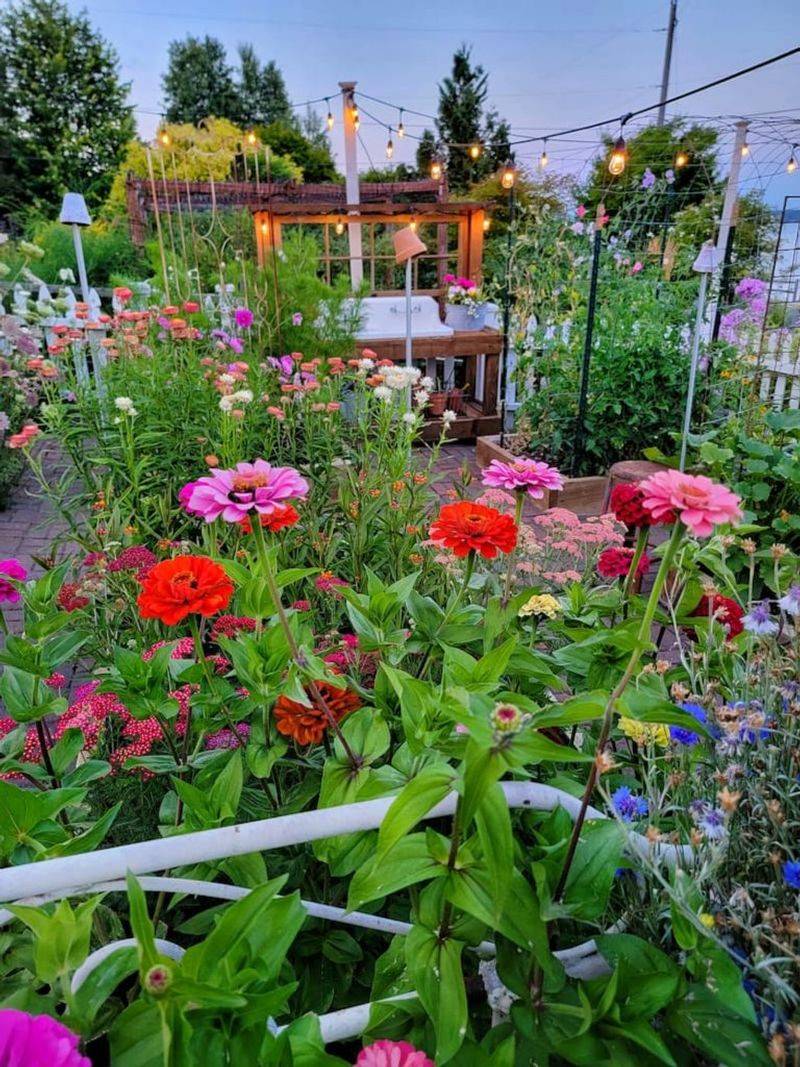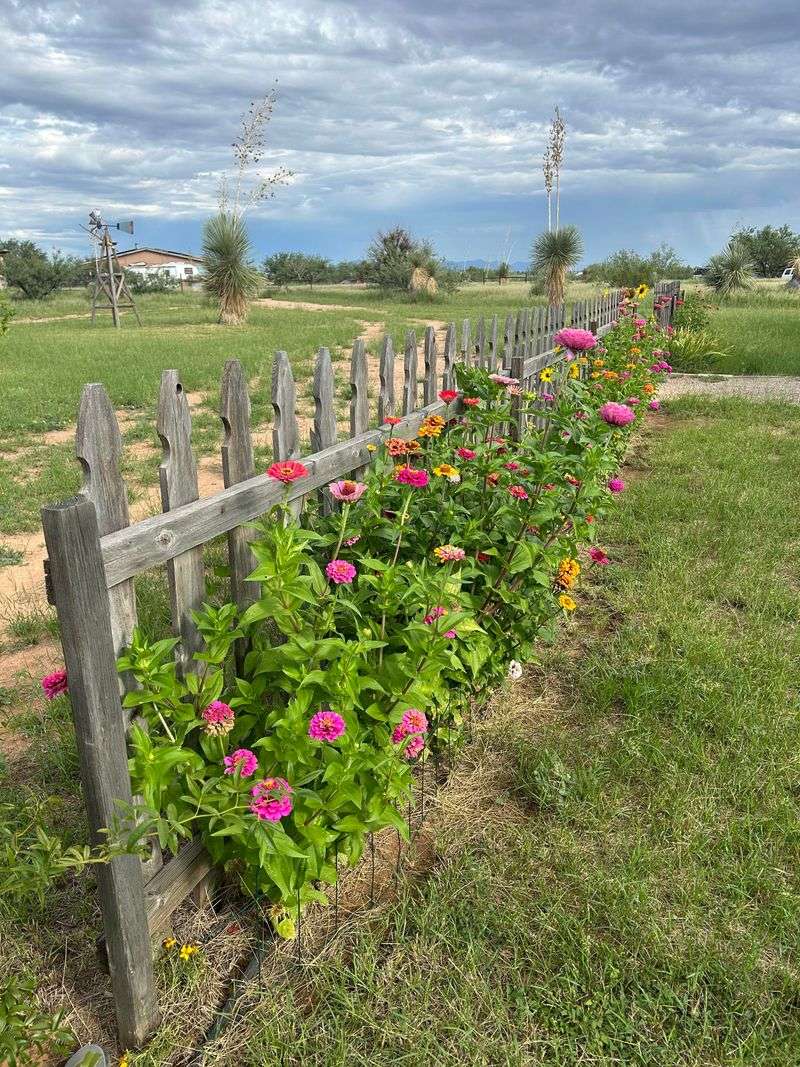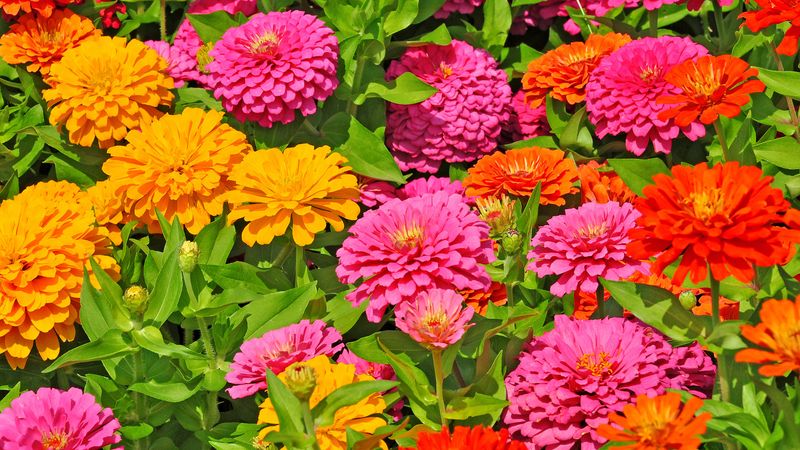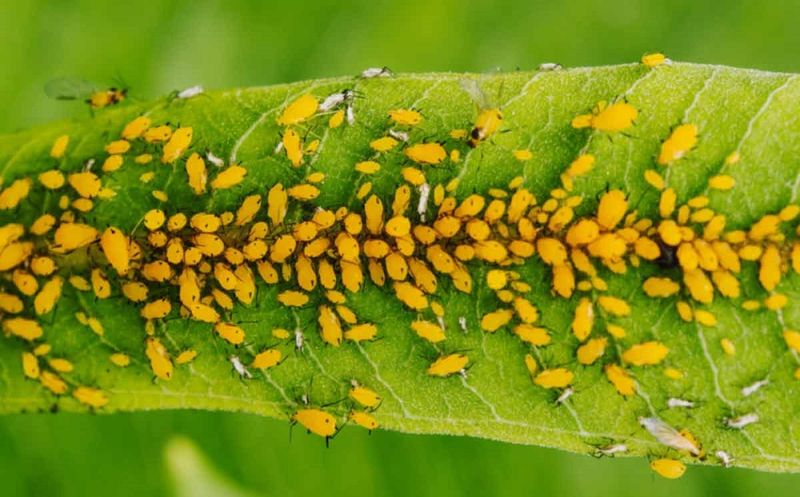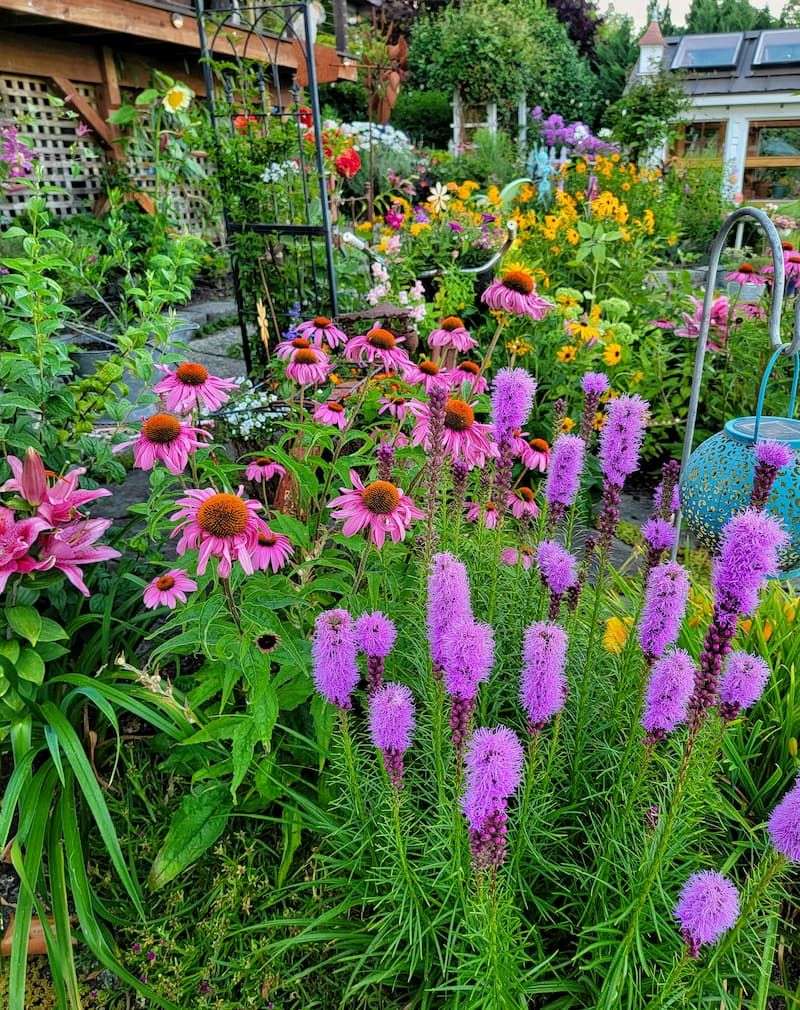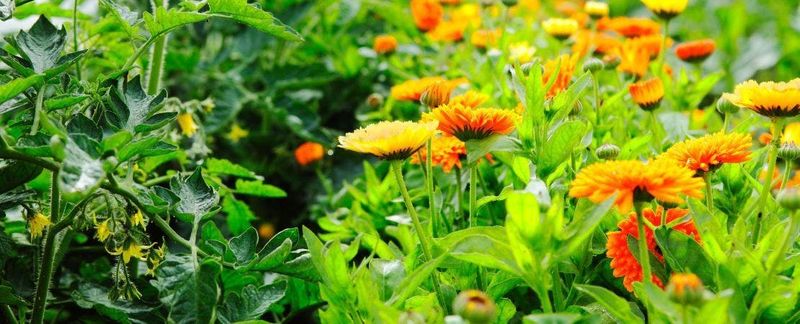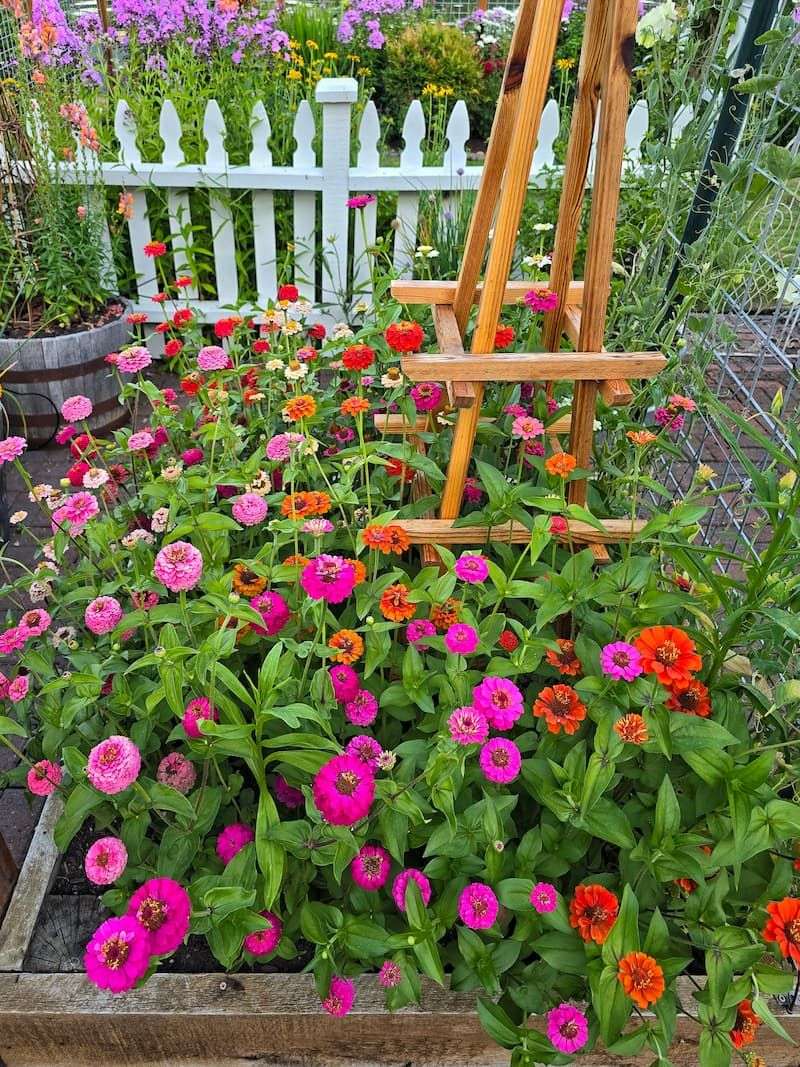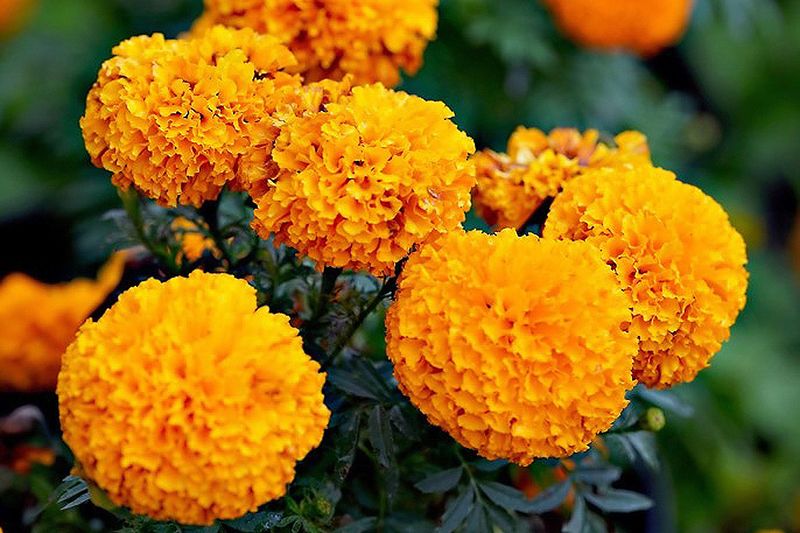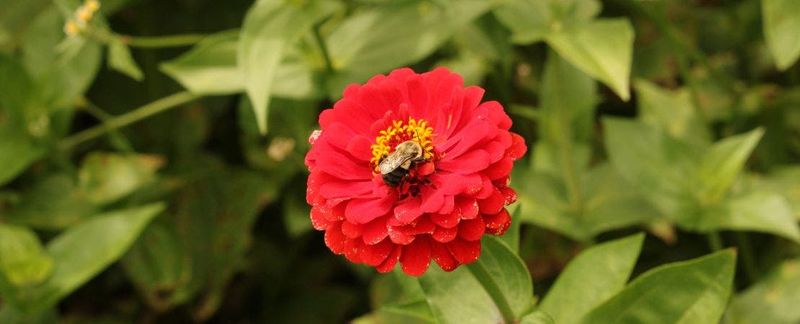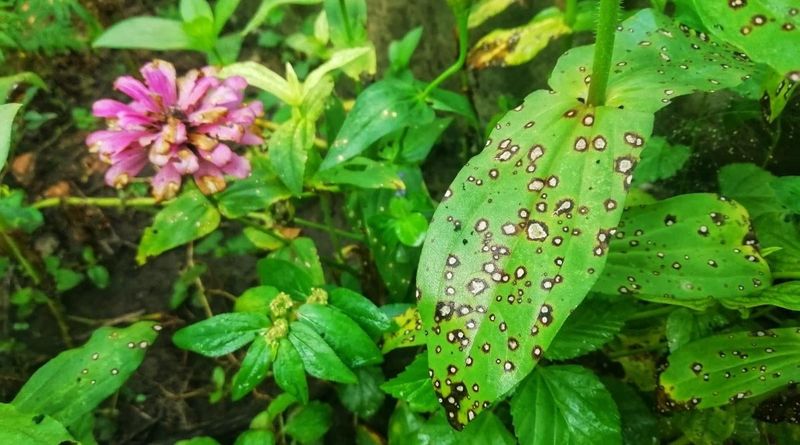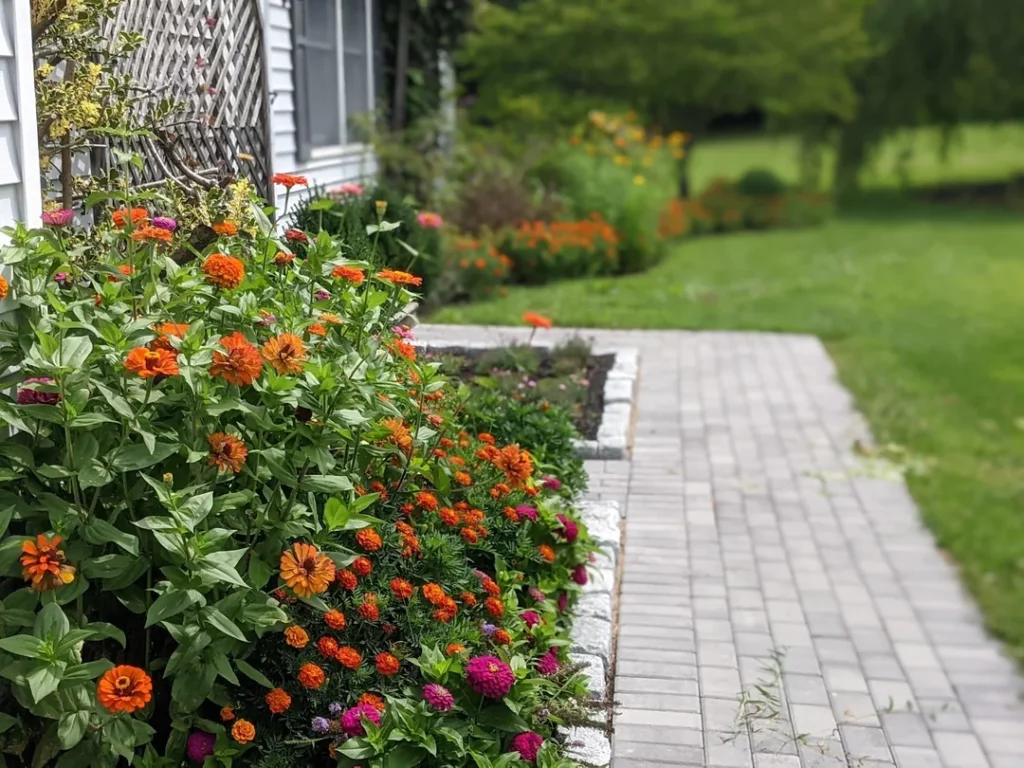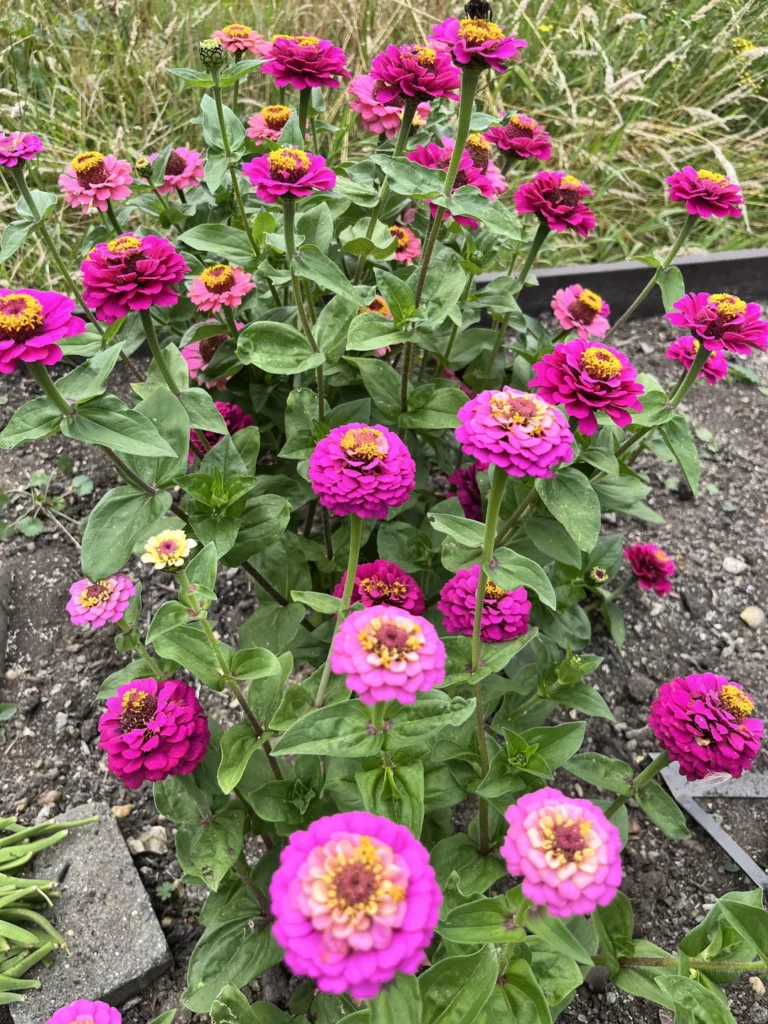Zinnias are garden charmers, but even the prettiest flowers can stir up a little drama if planted with the wrong neighbors. I’ve seen these beauties struggle more than they should—all because of a few innocent pairing mistakes.
If you’ve ever wondered why your zinnias look grumpy next to your veggies or herbs, you’re not alone. These little mix-ups are more common than you’d think, and the good news? They’re totally fixable once you spot them.
1. Planting Too Close To Tall Vegetables
Zinnias need plenty of sunlight to produce their colorful blooms. I’ve seen many gardens where zinnias struggle in the shadows of corn, sunflowers, or tall tomato plants. The shade from these vegetable giants reduces flower production and weakens zinnia stems.
Morning sun is particularly important for zinnias, helping to dry dew quickly and prevent fungal issues. When I moved my zinnias away from my towering cucumber trellis, they immediately showed improved vigor and produced twice as many flowers.
Allow at least 2-3 feet between zinnias and taller plants to ensure proper airflow and sunlight. This spacing helps both plants thrive without competing for resources that they both desperately need.
2. Crowding With Other Cut Flowers
Many gardeners cluster zinnias with other popular cutting flowers like cosmos and snapdragons, creating a jam-packed flower bed. The problem? These flowers all have similar water and nutrient needs, leading to intense competition and reduced blooming for everyone involved.
Last summer, I separated my zinnias from my dahlia patch after noticing both were producing fewer blooms. The improvement was dramatic – both flower types produced stronger stems and more abundant flowers once they had their own space.
Instead of crowding, plant zinnias with companions that have different root depths and water needs. Low-growing herbs or shallow-rooted plants make better neighbors than other thirsty, deep-rooted flowering plants.
3. Pairing With Plants That Attract Japanese Beetles
Japanese beetles love zinnias, but they absolutely feast on plants like roses, grapes, and raspberries. Planting these beetle magnets near your zinnias creates a beetle highway directly to your flowers. Once I removed the raspberry canes that were growing beside my zinnia patch, beetle damage decreased noticeably.
These pests will move from plant to plant, munching their way through your garden. The beetles skeletonize zinnia leaves and damage flowers, significantly reducing the plants’ vigor and ornamental value.
Keep zinnias at least 10-15 feet away from other Japanese beetle favorites. If you must grow both, consider using physical barriers or companion plants like garlic, chives, or catnip that help repel these destructive insects.
4. Ignoring Root Competition With Cucurbits
Squash, pumpkins, cucumbers, and melons have aggressive, spreading root systems that silently steal water and nutrients from nearby zinnias. My zinnias always struggled until I realized my nearby zucchini plants were the culprits, extending their roots far beyond their visible vines.
Cucurbits are heavy feeders that require substantial water and nutrients. When planted too close to zinnias, they leave little for their flowering neighbors, resulting in stunted growth and reduced blooming.
Maintain at least 3-4 feet between zinnias and any cucurbit family plants. Another approach is to plant them in separate beds or use root barriers to prevent the cucumber family’s roots from invading the zinnia territory.
5. Creating Dense Plantings With Poor Airflow
Zinnias are prone to powdery mildew, especially when air circulation is limited. Planting them alongside bushy companions like peppers, eggplants, or densely packed herbs creates humid pockets where fungal diseases thrive. I learned this lesson when my basil and zinnia combination turned into a mildew disaster.
Without proper airflow, morning dew and irrigation water stay on leaves longer. This extended moisture creates perfect conditions for mildew spores to germinate and spread throughout your zinnia patch.
Space plants properly and consider the mature size of all companions. Prune surrounding plants to improve air movement, and water at soil level in the morning so leaves can dry completely before evening.
6. Partnering With Heavy Nitrogen Feeders
Corn, cabbage family crops, and leafy greens are nitrogen hogs that can deplete the soil of this essential nutrient. When I planted zinnias near my kale bed last year, the zinnias produced lush foliage but disappointingly few flowers, a classic sign of too much nitrogen.
Excessive nitrogen promotes vegetative growth at the expense of flowering. For zinnias, this means tall, lanky plants with dark green leaves but sparse blooms – exactly the opposite of what most gardeners want.
Group zinnias with plants that have moderate or low nitrogen needs. If you must plant them near heavy feeders, supplement with phosphorus-rich fertilizers that promote flowering, and consider using physical barriers to separate root zones.
7. Overlooking Allelopathic Effects From Sunflowers
Sunflowers look like they’d be perfect companions for zinnias, but they release chemicals that inhibit the growth of nearby plants. After growing sunflowers and zinnias in the same bed for years with mediocre results, I finally separated them and saw my zinnias thrive like never before.
This chemical warfare, called allelopathy, is sunflowers’ natural way of reducing competition. The compounds they release through their roots and decomposing leaves can stunt zinnia growth, reduce germination rates, and weaken established plants.
Keep sunflowers in a separate bed or maintain at least 3 feet between them and your zinnias. If you’ve grown sunflowers in a spot previously, consider waiting a season before planting zinnias there to allow the allelopathic compounds to break down.
8. Planting Near Aggressive Mint Family Herbs
Mint, oregano, and other spreading herbs might seem like good companions for zinnias, but their invasive root systems quickly overtake flower beds. I once planted some oregano near my zinnias, and within a month, the herb had sent runners throughout the bed, stealing resources from my flowers.
These herbs don’t just spread above ground – their underground root systems are even more aggressive. They can choke out zinnias before you even notice the problem, reducing flower production and eventually displacing the zinnias entirely.
Keep mint family plants in containers or dedicated beds with barriers. If you want herbs near zinnias, choose non-invasive types like basil, parsley, or cilantro that stay where you plant them and don’t spread underground.
9. Failing To Consider Soil PH Preferences
Zinnias prefer slightly acidic to neutral soil (pH 5.5-7.0), but many gardeners plant them alongside acid-loving plants like blueberries or azaleas. When I tried growing zinnias near my blueberry bushes in acidic soil, they developed yellowing leaves – a telltale sign of nutrient deficiencies caused by improper pH.
Soil pH affects nutrient availability. In too-acidic soil, zinnias can’t properly access calcium and magnesium, leading to weakened plants that attract pests and diseases. Too alkaline, and they struggle to absorb iron and manganese.
Test your soil before planting and group zinnias with companions that share similar pH preferences. Good neighbors include marigolds, cosmos, and many vegetables that also prefer slightly acidic to neutral conditions.
10. Using Water-Hungry Companions
Zinnias are relatively drought-tolerant once established, but they struggle when forced to compete with water-guzzling neighbors. My zinnias always looked stressed until I moved them away from my celery and cucumber plants, which require frequent watering.
Water competition is especially problematic in hot, dry periods when water becomes a precious resource. Thirsty companions like lettuce, celery, and cucumbers can leave little moisture for zinnias, resulting in wilting, reduced flowering, and increased susceptibility to pests.
Group plants with similar water needs together. Zinnias make good companions for other moderately drought-tolerant plants like cosmos, sage, and many native perennials that won’t force you to choose between overwatering one plant or underwatering another.
11. Allowing Aggressive Vining Plants Nearby
Morning glories, pole beans, and other climbing plants might seem like space-efficient companions, but they can quickly overwhelm zinnias. Last season, my pole beans used my zinnia stems as impromptu trellises, eventually pulling them over and blocking their sunlight.
Vining plants are opportunistic and will climb anything available – including your zinnias. The weight of these climbers can bend or break zinnia stems, while their foliage creates shade that reduces flower production.
Keep vigorous climbers well away from your zinnias or provide them with proper trellises that direct their growth elsewhere. If you want vertical elements near zinnias, choose self-supporting plants that won’t grab onto their neighbors.
12. Underestimating Space Needs For Mature Plants
Young zinnia seedlings look deceptively small, leading gardeners to plant them too close to other species. I’ve made this mistake repeatedly, placing tiny zinnia starts near already-established plants, only to watch them struggle as everything grows to full size.
Mature zinnias need 9-12 inches between plants for smaller varieties and up to 18 inches for larger types. When crowded by other species, they develop weak stems, fewer branches, and significantly reduced flower production.
Always plan your garden based on mature plant sizes, not seedling dimensions. Leave adequate space between different plant types, and be willing to thin seedlings even when it feels wasteful. The remaining plants will reward you with better growth and more abundant blooms.
13. Pairing With Plants That Attract Aphids
Some plants are aphid magnets, creating breeding grounds for these pests that quickly spread to zinnias. My nasturtiums, while beautiful, ended up funneling aphids directly to my nearby zinnias, causing significant damage before I could intervene.
Aphids multiply rapidly and can move from plant to plant with ease. Once established on zinnias, they distort new growth, weaken plants, and create sticky honeydew that leads to sooty mold problems.
Keep known aphid attractors like nasturtiums, roses, and hibiscus separated from your zinnias. Alternatively, use this attraction strategically by planting “trap crops” far from your zinnias to draw aphids away. Regular monitoring and introducing beneficial insects like ladybugs can help manage populations before they become problematic.
14. Forgetting Pollinator Competition Issues
Planting too many different flowering plants together can create competition for pollinators. When I surrounded my zinnias with equally attractive flowers like coneflowers and black-eyed Susans, I noticed fewer pollinators visited the zinnias, resulting in reduced seed production.
Pollinators often develop preferences for certain flowers during their foraging trips. If more appealing options are nearby, they may bypass your zinnias entirely, affecting not just seed production but also the vigor of subsequent blooms.
Balance your garden with different types of flowers that bloom in succession rather than all at once. This provides consistent resources for pollinators while allowing each plant species its moment as the star attraction. Consider including some less showy companion plants that support beneficial insects without competing for pollinators.
15. Creating Shade With Tall Companion Plants
Zinnias need 6-8 hours of direct sunlight daily, but gardeners often plant them near tall or bushy plants that cast afternoon shadows. My mistake was placing zinnias east of my tomato patch, which seemed fine in spring but left the flowers in shade by midsummer when the tomatoes reached their full height.
Even partial shade significantly reduces zinnia flowering. Plants that receive insufficient light produce fewer blooms with less vibrant colors and develop weaker stems that are more susceptible to damage and disease.
Always consider the sun’s path across your garden and the mature height of all plants when planning. Place taller plants to the north of zinnias to prevent shadowing, and regularly prune nearby plants that might block sunlight as they grow.
16. Mixing With Heavy Self-Seeders
Some companion plants reseed so aggressively they can overwhelm zinnias the following season. Dill, chamomile, and borage have taken over sections of my garden where I originally planted zinnias, pushing out the flowers I actually wanted to keep.
These enthusiastic self-seeders drop thousands of seeds that remain viable in the soil for years. Even with regular weeding, they can dominate a bed and make it difficult for direct-sown zinnia seeds to establish themselves in subsequent seasons.
Either deadhead prolific seeders before they set seed or keep them in separate areas of the garden. If you value both plants, consider growing the aggressive self-seeders in containers where their reproduction can be more easily controlled.
17. Ignoring Plant Family Relationships
Many gardeners don’t realize that plant family relationships matter when companion planting. I once surrounded my zinnias with dahlias, sunflowers, and marigolds, creating a beautiful but problematic garden because all these plants belong to the Asteraceae family and share similar pest and disease vulnerabilities.
Family members often attract the same insects and suffer from the same diseases. When these plants grow together, problems can quickly spread throughout the bed, turning a small issue into a garden-wide crisis.
Mix plant families in your zinnia beds to create diversity that helps break pest and disease cycles. Interspersing plants from different families creates natural barriers that can slow or prevent the spread of family-specific problems.
18. Overlooking Fertilizer Competition
Heavy-feeding plants can deplete soil nutrients before zinnias get their fair share. My zinnias always looked pale and produced few flowers until I realized my nearby brassicas were consuming most of the available nutrients, leaving little for the flowers.
Different plants uptake nutrients at different rates and in different proportions. Hungry vegetables like broccoli, cabbage, and cauliflower have extensive root systems that efficiently extract nutrients, potentially leaving companion plants nutrient-deficient.
Group plants with similar feeding needs together. For heavy feeders planted near zinnias, consider using targeted fertilization methods like side-dressing that direct nutrients to specific plants. Regularly amending soil with compost helps maintain adequate nutrition for all plants in mixed plantings.
19. Planting With Incompatible Watering Needs
Zinnias prefer deep, infrequent watering that allows soil to dry between waterings. Pairing them with moisture-loving plants creates an impossible situation where you’re forced to either overwater zinnias or underwater their companions.
Overwatering zinnias leads to root rot, fungal diseases, and overall decreased plant health. The stress from improper watering also makes them more susceptible to pest problems and reduces their flowering potential.
Group plants according to their watering needs, keeping zinnias with other plants that prefer drier conditions. If you must mix plants with different water requirements, consider using drip irrigation with different emitter rates or hand-watering specific plants as needed.
20. Companioning With Plants That Harbor Spider Mites
Spider mites are tiny pests that thrive in hot, dry conditions—just like zinnias. However, certain plants like beans, marigolds, and strawberries often host early infestations that quickly spread to nearby flowers.
Spider mites reproduce rapidly and can be hard to spot until significant damage has occurred. They suck the sap from zinnia leaves, leaving them discolored, brittle, and prone to further disease.
Avoid planting known spider mite-prone species next to zinnias, especially in hot, dry climates. Regularly inspect plants for early signs of mite activity, encourage beneficial predators like predatory mites and ladybugs, and maintain humidity through mulching and strategic watering to deter outbreaks.
21. Grouping With Plants That Require Frequent Pruning
Some plants—like basil, coleus, or fast-growing ornamental grasses—require constant pruning to stay in shape. When placed too close to zinnias, routine maintenance of these companions can disrupt or damage the more delicate zinnia stems and flower buds.
Zinnias don’t recover well from mechanical damage to their stems or developing buds. Frequent brushing, cutting, or jostling from maintenance tasks stresses the plant and can lead to reduced flowering or fungal entry points.
Give zinnias breathing room away from high-maintenance neighbors. If you do plant near pruning-prone species, be extra cautious when trimming and use support stakes to protect zinnia stems from accidental contact or tool mishaps.

